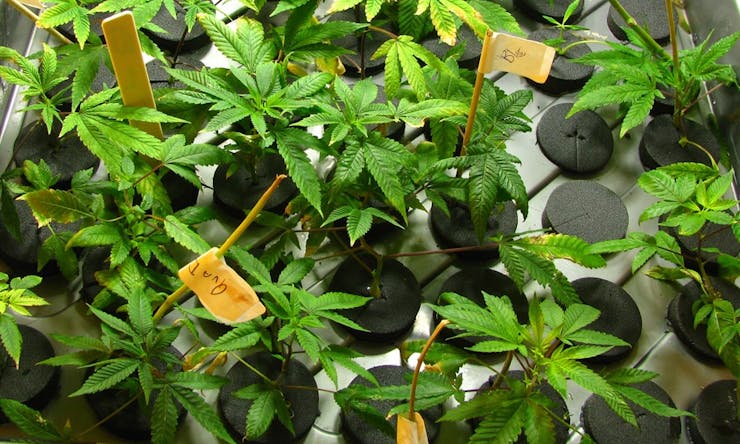Medical cannabis patients in the U.S. and Canada enjoy access to hundreds of cannabis strains, from which they can choose the most effective for treating their specific condition. But in Europe, where medical marijuana programs have only recently gained political attention, the selection is extremely limited. In some countries only purified (and often synthesized) THC is available, while in others — such as Italy, Germany, or the Netherlands — only a small number of patients can obtain raw cannabis flowers.
Regardless of whether a patient is at a pharmacy in Rome, Amsterdam, or Berlin, the content of the plastic jar doesn’t differ much. There are currently just a handful of cannabis strains used legally across the EU. All of them originated in the federal Dutch cannabis program, but usually they can be traced back to the black market.
New medical cultivation operations in Italy and the Czech Republic exclusively work with genetics from the Netherlands, the same varieties developed by the Dutch company Bedrocan. Until 2003 the Dutch company SIMM (Stichting Institute of Medical Marijuana) offered more varieties, but the producer’s license was revoked, in part because SIMM didn’t want its medicine sterilized by gamma radiation as required under Dutch law.
In the Czech Republic and Italy, governments granted licenses to groups with no previous experience with cannabis, and they’ve struggled to produce medicine of sufficient quality. Germany and Finland do not have any domestic production. For years, both countries have relied on imports from the Netherlands’ limited stock, which even today leads to regular supply shortages.
Without more competition in the market, further supply shortages and a scant selection of strains are likely to persist. In Canada and the U.S. states that have legalized medical cannabis, the introduction of sanctioned programs comes with free market competition. The result? Better results for patients at reduced costs.
In Germany, cannabis patients currently have to pay €15.45 ($17) per gram on average. In Italy, it’s over €30 ($33). A gram of medical-grade extract or purified THC in either of the two EU countries can cost four to eight times as much as cannabis in flower form. That’s a stark contrast to Canada where patients pay between €4 and €10 per gram and supply shortages just don’t exist.
To address these shortcomings, German lawmakers are debating a bill that would widen access and allow for more cannabis imports. But the bill’s fate is still up in the air.
If Europe hopes to be a leader in cannabis and not lag behind, it’s essential that research, development, and widespread cultivation of multiple varieties take place. Until a robust European cultivation and distribution network is established, countries will need to rely on overseas imports in order to supply EU patients with the amount and type of medicine they need. Many EU countries still regard medical cannabis as a necessary evil that needs to be carefully contained instead of recognizing the huge opportunity it represents.
Products Available in European Markets
Bedrocan
THC: 22%
CBD: < 1%
Origin: Stabilized F2 hybrids of Jack Herer
Bedrobinol
THC: 14.5%
CBD: < 1%.
Origin: Bred from Jack Herer and Afghani
Bedica
THC: 14%
CBD: < 1%
Origin: Mostly indica genetics, bred from Afghani and Herijuana
Offered only as granules.
Bediol
THC: 6.5%
CBD: 8%
Origin: Unknown (trade secret)
Sold in granular form.
Bedrolite
THC: < 1%
CBD: 9%
Origin: Unknown (trade secret)
Sold in granular form.









